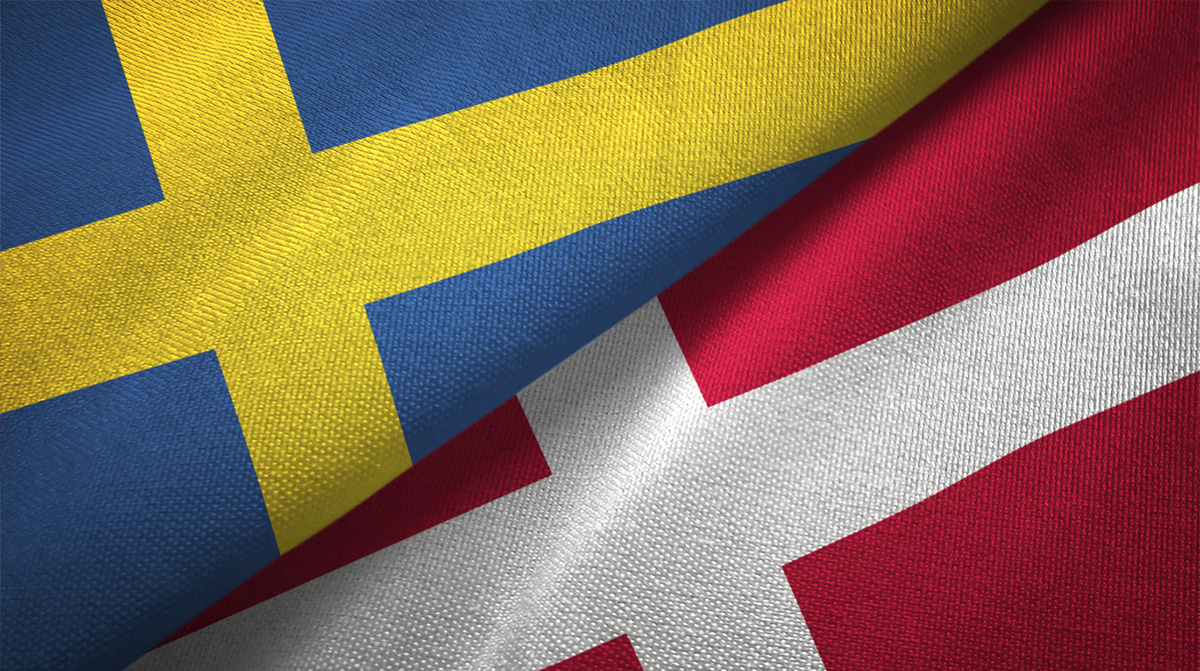Advertisement
Is there any power in the policies?

Danish and Swedish life science strategies under the lens at Medicon Valley Alliance Annual Meeting.
The Medicon Valley Alliance (MVA) Annual Meeting took place on November 11th, symbolically held in the middle of the Medicon Valley region. During the full day program, policy making was constantly present in the discussions on stage as topics highlighted ranged from women’s health, antimicrobial resistance (AMR), and the recent attraction of the region to major foreign manufacturing establishments. All of which depend on not just a coordinated approach from the local actors but also on strategies and policy making of national governments of Sweden and Denmark.
Q&A: Jeanette Edblad
Suitably, the Swedish government just published a national life science strategy, presented on stage by Jeanette Edblad, Director of the Swedish Governmental Office for Life Sciences, during the event. NLS asked her about the strategy.

This is an updated version of the strategy released 2019, what has happened since?
“Besides the fact that Sweden has a new government since then, the life science-sector’s strategic importance has grown due to major changes in the world over the past decade. Pandemics, wars and geopolitical turmoil have led to less globalization and more of national protectionism. Consequently, research, innovation including technical development, and production have taken on an even more prominent role in economic growth and competitiveness, but also in societal development and preparedness, with the potential to become a significant factor of power and influence. Despite an economic downturn, we notice that many countries are prioritizing investing in research – and so is Sweden. The ambition manifested in the upcoming research and innovation bill is an important complement to the life science strategy. Since 2019 we have faced and are still facing a range of challenges that affect our health and well-being. From climate change and antimicrobial resistance to the rise of chronic diseases and mental illness.”
If the updated strategy is implemented, will it be sufficient to achieve the goals?
“The strategy is a long-term framework, with the dual purpose of setting out vision and direction, while being concrete and inviting to action. Some objectives will be achieved relatively quickly, others will require more work. It is important to remember that the strategy also interacts with other strategies developed by the government, e.g. the research and innovation bill, and it is also very dependent on other actors’ strategies and investments.”
We, the Nordics, are also leaders in sustainability and green transition and can lead the way globally also in the life sciences sector.
The Danish government published a strategy a few years back, what can Sweden learn from Denmark?
“I think we can be inspired and learn from the Danish work with clinical trials to name one example that immediately comes to mind. In general, I think that we can really benefit from each other through more cooperation, not least in policy-related matters. Both countries e.g. have life science strategies and thus experiences to share with each other, with other EU countries and the Commission. We, the Nordics, are also leaders in sustainability and green transition and can lead the way globally also in the life sciences sector.”
The strategy states that the Government wants to encourage both cross-sectoral and cross-border collaboration.
Some of the initiatives and infrastructures mentioned in your presentation of the strategy at the MVA summit are open to international companies. Which ones and what is the thinking behind that?
“There are several reasons for that. One example is that in most cases international cooperation benefits Sweden and the Swedish business community’s opportunities to benefit from large international investments in research and development. Researchers and Swedish companies must be a part European and international research infrastructure as well as innovation environments where tomorrow’s cutting-edge technology is developed. The strategy states that the Government wants to encourage both cross-sectoral and cross-border collaboration. International environments can e.g. be found at SciLifeLab, ESS, Max IV, and also at innovation hubs like NorthX Biologics and CCRM Nordic.”
Last but not least, touching the topic of resources. Do you have the means to execute all these activities?
“The implementation of the strategy started some years ago, and we are lucky to continue and build on that work and also on all the important new initiatives that are being taken in the sector and those that are already up and running. Medicon Valley Alliance is one good example.”
“Collaboration between all stakeholders, both public and private, is a must. One aim with the strategy is therefore to ensure that different actors in health, research, business and society work together, and pool resources to jointly achieve common goals. By fostering dialogue and partnerships, we can ensure that we make the best use of our resources and that innovation in the life sciences sector is translated into practical health benefits. The future of life science will not be created by any single actor in the sector, but by our collective ability to collaborate, share insights and drive change. By investing in life sciences together, we can build not only long-term competitiveness but sustainable and person-centred healthcare that strengthens public health, prevents disease, and improves quality of life for all.”
Q&A: Niels Abel Bonde
NLS also asked Niels Abel Bonde, Chairman of Medicon Valley Alliance and a recurring columnist in NLS magazine, about the Swedish and the Danish strategies.

Do you think the Danish and Swedish national life science strategies respectively embrace the Nordic dimension and potential in joining forces in the Nordics when faced with global competition for talent, companies, clinical trials, etc?
“The two national strategies have the same ambition: to make Denmark and Sweden leading life science nations. They are building on a strong focus on innovation to drive growth of new treatments and private companies. Another common denominator is the triple helix – building on regions/hospitals, universities, and private companies. I’m very happy to see that the Swedish strategy focuses on collaboration and also on the Nordic perspective. From a MVA-perspective, I truly believe that we can support both life science strategies based on what we offer. Finally, MVA is strengthened by establishing a world class innovation center for life science and quant-technology – a good example of how the Danish life science strategy also strengthens the Medicon Valley region.”
I’m very happy to see that the Swedish strategy focuses on collaboration and also on the Nordic perspective.
A few years ago at a life science conference at Børsen, Copenhagen, both you and the at the time Danish general manager of Ferring, Marianne Kock, identified talent and talent attraction as the key challenges for the life science industry. Do you believe that the two life science strategies address these challenges, and do you believe a more concerted Danish-Swedish or even Nordic strategy could add further value?

Can we boost our cultural attractiveness?
Both Danes and Swedes like to emphasize, and often make fun of, the more or less significant differences between our cultures.
“This is a key area for long-term growth and realization of the respective life science strategies. Clearly more needs to be done here. A strong Medicon Valley in itself helps attract talent as the region offers multiple opportunities for employment and development. Medicon Valley is EU’s largest life science cluster, offering multiple employment opportunities over time. Offering easy and flexible opportunities in the whole Medicon Valley across the Øresund bridge is important. Obviously less barriers are needed, but also an even better integration of new talent to the region is needed.”
This is a key area for long-term growth and realization of the respective life science strategies. Clearly more needs to be done here.
Q&A: Anette Steenberg
Finally, we asked Anette Steenberg, CEO of Medicon Valley Alliance, about her thoughts on the challenges of solving the skills shortage in the Nordics.

The topic of talent have been high up on your agenda, not least due to the strong inflow of labour-intense manufacturing plants. Can you comment on this?

International researchers help fuel Swedish innovation
Sweden boasts a global reputation for cutting-edge research and innovation, but the country’s ambition to maintain its leading position as an innovation nation faces a significant challenge: securing and retaining top talent from abroad. Why then is the route to work permits for international professionals complex and lengthy?
“Yes, one of the outcomes of the Medicon Valley Alliance’s annual Analysis “State of Medicon Valley” and a major topic at the conference was the prominent numbers of CDMOs in the Medicon Valley region. So prominent that it in fact is home to the highest number of CDMOs in Europe! An important and valuable part of the life science industry chain that has and is experiencing impressive growth with for instance FUJIFILM Diosynth Biotechnologies Denmark just having completed the first phase of what is to become the largest CDMO facility in Europe. Consequently, what Niels raised about talent attraction will continue to be of outmost importance for our region.”
Published: November 26, 2024











